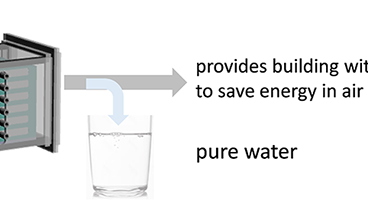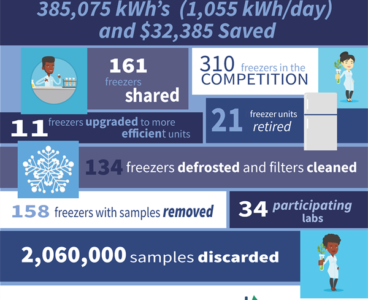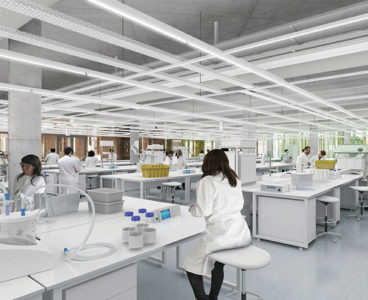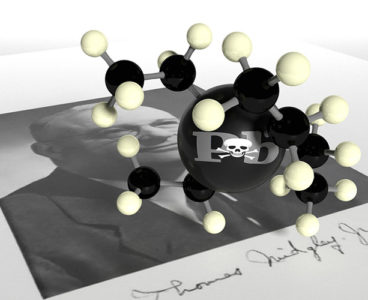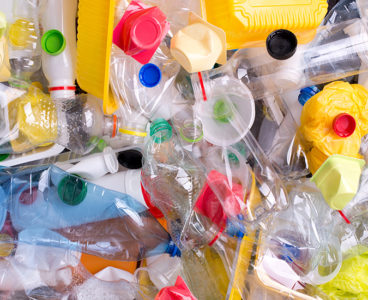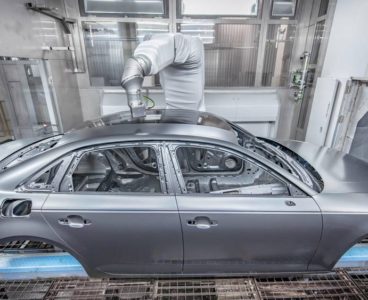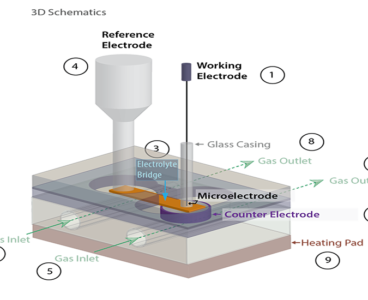Multi-functional Sorbent Technology (MUST), from Department of Energy, National Energy Technology Laboratory (NETL), Somerset International and The Dow Chemical Company, is a game-changing suite of sorbents that remove cationic (positively charged) and oxygen-containing anionic (negatively charged) heavy metals from aqueous and nonaqueous sources. Such versatility and low cost make MUST highly effective to clean contaminated…
R&D 100 winner of the day: Ubiquitous Water Wand (UWAW)
Ubiquitous Water Wand (UWAW), developed by Industrial Technology Research Institute (ITRI) and Chyi Ding Technologies, is an ultrahigh efficiency vapor/air separation equipment which extracts clean water from the air we breathe. It provides ultra clean drinking water without water sources, cooling media or water filters. In conjunction with an air-conditioner, UWAW can also provide buildings…
Top-10 areas of amazing science at Brookhaven Lab in 2021
By Karen McNulty Walsh and Stephanie Kossman, Brookhaven National Laboratory Research at the U.S. Department of Energy’s (DOE) Brookhaven National Laboratory spans scales from the cosmic to subatomic, advancing our understanding of the world around and within us. Looking for discoveries that spark transformational technologies? Brookhaven has those, too! Here’s the 2021 recap of important…
R&D 100 winner of the day: PhotoCube
The PhotoCube, from ThalesNano and ComInnex, is a multi-wavelength benchtop photoreactor designed for advanced photochemical reactions. Various configurations can be applied to a diverse set of batch, flow and stop-flow photochemical reactions. Options for multicolor and UV LEDs enable you to apply up to 7 wavelengths, in addition to white, even simultaneously. The combination of…
A cool game for one hot competitor — the 2021 Freezer Challenge
International Freezer Challenge honors Univ. of Illinois with 2021 “Winning Streak Award.” By Becky Chambers Hennessy, contributing writer (This is part two of a two-part series. Read part one, Facing sustainability in the lab, here.) The University of Illinois Urbana-Champaign is continuing a hot streak in arguably the coolest competition around. The university was recognized…
Facing sustainability in the lab
By Becky Chambers Hennessy, contributing writer Scientific research leaders are taking a long look in the mirror. They see their laboratories as home to beneficial scientific breakthroughs, in areas from epidemiology and the coronavirus to climate change and greenhouse gases. They’re also recognizing them as resource-intensive spaces with enormous carbon footprints. It’s an irony that’s…
Can we ever get the lead out?
By Mark Jones A century is how long it took for one bad chemistry choice to run its course. The end of August 2021 was the end of what can only be described as a sad century in the history of chemistry. At the end of August, headlines proclaimed the world finally stopped using leaded…
Eco-friendly SOLESPHERE silica gels improve tactile aesthetics in skincare formulations
To help formulators develop high-performance, safer cosmetics and skin care products, AGC Chemicals Americas offers SOLESPHERE microsphere silica gels. When used in sunscreens, cosmetics and skincare formulations, the silica gels boost sun protection factor (SPF) and add performance properties. The silica gels can improve application smoothness, absorb oil and perspiration, give a matte appearance, minimize…
Howard University and Amgen create Academia-Biotech Educational Fellowship
Howard University’s Chemical Engineering Department and Amgen, an independent biotechnology company, have designed an innovative academic-industry partnership meant to greatly expand opportunities for underrepresented minorities in the biotechnology and pharmaceutical industries. The partnership takes the form of a fellowship for master’s level graduate students and includes training in Amgen’s laboratories. The Chemical Engineering Department, in…
Department of Energy to invest $25M in polymer upcyling, plastic waste reuse research
From the office of the U.S. Department of Energy (DOE) The U.S. Department of Energy (DOE) this week announced plans to invest $25 mil in fundamental science to lay the groundwork for technology that finds reuses for plastic waste, makes strides toward addressing the global plastic waste crisis and reduces the climate impacts of plastic…
Study reveals platinum’s role in clean fuel conversion
Scientists at the U.S. Department of Energy’s Brookhaven National Laboratory, Stony Brook University (SBU) and other collaborating institutions have uncovered dynamic, atomic-level details of how an important platinum-based catalyst works in the water gas shift reaction. This reaction transforms carbon monoxide (CO) and water (H2O) into carbon dioxide (CO2) and hydrogen gas (H2) — an…
R&D 100 winner of the day: Versatile Cold Spray (VCS)
Versatile Cold Spray (VCS), developed by Lawrence Livermore National Laboratory, outperforms other cold spray and additive manufacturing techniques by depositing both ductile and brittle materials to any substrate of any shape without adhesives. The unique VCS nozzle and feed system preserves the functional qualities of brittle materials such as semiconductors, including thermoelectrics and magnets, achieving…
An anode-free zinc battery that could someday store renewable energy
Renewable energy sources, such as wind and solar power, could help decrease the world’s reliance on fossil fuels. But first, power companies need a safe, cost-effective way to store the energy for later use. Massive lithium-ion batteries can do the job, but they suffer from safety issues and limited lithium availability. Aqueous zinc-based batteries have…
R&D 100 winner of the day: Overspray free paint application
The EcoPaintJet overspray-free paint applicator, invented by plant-engineering firm Dürr, plus novel decorcoat paint from PPG (the second color applied), represents the world’s first implementation of precision application of automotive coatings. The innovative overspray-free paint application process eliminates all overspray from the paint application process, maintains crisp edges after being applied and meets all automotive…
R&D 100 winner of the day: RHOBARR 320 Polyolefin Dispersion for Paper and Board
RHOBARR 320 Polyolefin Dispersion, from the Dow Chemical Company, is a unique solution to the global problem of waste management and recycling for single-use paper articles. It provides comparable liquid and grease barrier to incumbent technology but at lower raw material use, resulting in finished articles that are compatible with existing paper recycling infrastructure. Further,…
New technique promises to accelerate materials development for gas separations
In an exciting new advance, a team of scientists from Hiden Isochema in the UK and Cleveland State University in Ohio have developed a new way of analyzing materials for separating gases. Although gas separation using porous materials is an established technology, analytical techniques for assessing the performance of materials tend to be slow and…
R&D 100 winner of the day: DOWSIL EC-6601 electrically conductive adhesive
DOWSIL EC-6601, from Dow Performance Silicones, provides a step-change in performance of electrically conductive adhesives, critical for emerging applications in autonomous driving, cameras and 5G base-station applications. It provides high elongation, superior shielding, strong adhesion, durability and conductive performance. Its unique siloxane matrix, enabled by Dow’s backward integration of raw materials, provides novel electrical and…
R&D 100 winner of the day: High entropy alloy catalysts
Catalysts are the enabling technology for the current chemical industry and clean energy applications such as battery and fuel cell cars. However, current catalysts have significant challenges such as structural instability and high cost. Finding new and better catalysts is paramount yet largely limited by immiscibility among elements and slow experimentation. Researchers at the University…
‘Sparkling’ clean water from nanodiamond-embedded membrane filters
ACS Applied Materials & Interfaces Although most of the planet is covered by water, only a fraction of it is clean enough for humans to use. Therefore, it is important to recycle this resource whenever possible. Current purification techniques cannot adequately handle the very hot wastewater generated by some industries. But now, researchers reporting in…
Persedo’s innovative processing of distilled spirits is Episode 3 of R&D 100 – The Podcast
Following up on the enormous success of the first two episodes of R&D 100 – The Podcast, we are happy to report that Episode 3 is now live! Today, co-hosts Paul J. Heney and Aimee Kalnoskas, editors with R&D World magazine, are day drinking — but it’s all in the name of science! We swear! In…
A hydrogel that could help repair damaged nerves
Injuries to peripheral nerves — tissues that transmit bioelectrical signals from the brain to the rest of the body — often result in chronic pain, neurologic disorders, paralysis or disability. Now, researchers have developed a stretchable conductive hydrogel that could someday be used to repair these types of nerves when there’s damage. They report their…
R&D 100 winner of the day: Clean-Surface Technology
Before PPG’s Clean-Surface Technology, interior wall paints did not deliver the washability that people desire in a paint, despite big promises and even bigger price tags. Some do well on water-based stains or on oil-based stains, but none did well in resisting both types of stains. Homeowners clean their walls and are left with shiny…
R&D 100 winner of the day: Flow-Through Microelectrode Cell for Precision Electroanalytical Chemistry
Lawrence Berkeley National Laboratory’s Flow-Through Microelectrode Cell for Precision Electroanalytical Chemistry provides the simplest, fastest, most affordable, precise and comprehensive tool for analyzing electrochemical systems that employ solid electrolytes. Because of its cost and performance advantages, this testing innovation can accelerate development of electrochemical technologies that meet critical global needs, particularly electrical energy storage and…
Investments aim to strengthen capabilities of DuPont Liveo healthcare silicone solutions
DuPont (NYSE: DD), a producer of silicone-based technology and innovations for healthcare, is making significant investments in both capital and resources to strengthen strategic capabilities of its Liveo brand healthcare silicone solutions. Underscoring its long-term commitment to the healthcare industry – and confidence in its growth potential – DuPont is investing in innovation, as well…
R&D 100 winner of the day: DOWSIL EI-2888 Primerless Silicone Encapsulant
Clear optical properties, reliable and durable protection, easy and robust processing are key characteristics for LED luminaire encapsulants in harsh environments. Lighting under harsh environments (outdoor, explosion-proof) particularly suffers from heavy and costly fixtures for protecting the electronic parts, and to penetrate this market, lightweight LED luminaires require sustainable and reliable protection. The luminaire market…


